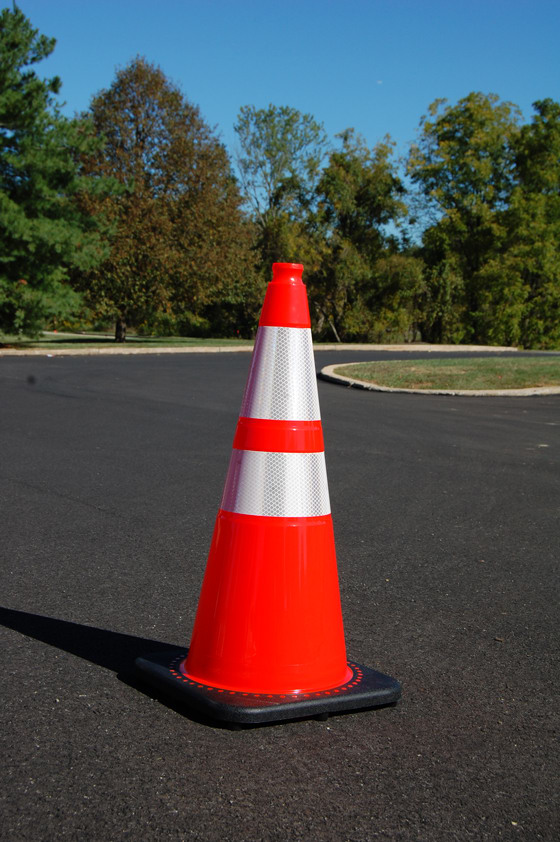Why Is So Much Road Work Done During Summer?
Summer brings sunny skies, road trips, and a familiar sight across the United States: orange cones, construction barriers, and road work crews. If you’ve ever wondered why road construction seems to peak during the warmer months, you’re not alone. At the Traffic Safety Store, we’re diving into the reasons behind this seasonal surge in road work, the challenges it creates, and how drivers can stay safe in work zones.
Favorable Weather Conditions
The primary reason for the summer road work boom is the weather. Summer offers clear skies, warm temperatures, and longer daylight hours, creating ideal conditions for construction projects. Unlike winter, when snow, ice, and freezing temperatures can halt progress or damage materials like asphalt, summer provides a stable environment for paving, repairs, and infrastructure upgrades. According to the Federal Highway Administration, asphalt and concrete work require specific temperature ranges for proper curing, which summer reliably delivers. Rain, while still a factor in summer, is less disruptive than winter’s snow and ice. The warmer months allow crews to work efficiently, reducing project timelines and costs. This is why Departments of Transportation (DOTs) across the country schedule major repairs, repaving, and bridge maintenance for summer, when conditions minimize delays and ensure quality results.Infrastructure Maintenance Needs
America’s roads and bridges are aging, with many in need of repair due to years of wear and tear. Winter weather exacerbates damage, creating potholes as freezing and thawing cycles cause pavement to crack and expand. Summer is the ideal time to address these issues, as DOTs scramble to fix potholes, resurface roads, and reinforce bridges before the next winter season. The urgency to complete these repairs during favorable weather drives the summer construction surge. Additionally, summer’s longer daylight hours allow crews to work extended shifts, increasing productivity. This is critical for large-scale projects like highway expansions or new infrastructure developments, which require significant time and coordination.Increased Traffic and Safety Challenges
While summer is ideal for road work, it also coincides with peak travel season, leading to increased traffic and safety risks. The National Highway Traffic Safety Administration reports that July through September sees the highest number of traffic fatalities, partly due to higher vehicle miles traveled—266.8 billion in July alone compared to 212.6 billion in February. Construction zones exacerbate these risks, with narrowed lanes, sudden stops, and unfamiliar traffic patterns. In 2024, Texas alone reported nearly 28,000 work zone crashes, resulting in 215 fatalities, mostly drivers and passengers. Road workers also face significant dangers, as speeding or distracted drivers can turn work zones into hazardous areas. The combination of increased traffic and construction activity makes summer a critical time for heightened driver awareness.Safety Tips for Navigating Work Zones
Navigating summer work zones requires vigilance and patience. Here are practical tips to ensure safety for drivers, passengers, and road workers:-
- Slow Down: Obey posted speed limits in work zones, which are set to protect both drivers and workers. Speeding is a leading cause of work zone crashes.
- Stay Focused: Avoid distractions like phones or adjusting the radio. Work zones often have sudden changes that require quick reactions.
- Follow Signs and Flaggers: Pay attention to work zone signs, arrows, and flaggers, which guide you safely through altered traffic patterns.
- Plan Ahead: Check for work zones using tools like 511 or your state’s DOT website to avoid delays and prepare for detours.
- Give Space: Maintain a safe following distance to account for unexpected stops or equipment in the roadway.
The Role of Traffic Safety Equipment
High-quality traffic safety equipment is essential for keeping work zones secure. At the Traffic Safety Store, we provide MUTCD-compliant traffic cones, signs, flares, and high-visibility gear to protect workers and guide drivers. For example, our Orion Road Flares enhance visibility during emergencies, while our reflective traffic cones ensure clear delineation of work zones, even in low-light conditions. Equipping work zones with reliable safety tools reduces risks and saves lives.Conclusion
Summer’s favorable weather, urgent infrastructure needs, and extended daylight hours make it the prime season for road work. However, the combination of construction and increased traffic creates unique challenges for drivers and workers alike. By understanding why road work spikes in summer and following safety tips, we can all contribute to safer roads. At the Traffic Safety Store, we’re committed to providing the tools and knowledge to keep work zones safe. Let’s work together to ensure everyone gets home safely this summer. Shop Safety Equipment Now
Orange 28" 7.0 Lb. Traffic Cone with Black Base
- 14" x 14" base
- Approx. 7.0 lbs. each
Quick Facts:
- 28" tall, 14"x14" base, Bright Orange
- 7 lbs weight
- JBC Part No. RS70032CT3M64
- Safety Standards - MUTCD; NCHRP-350 crashworthy approval
- Free Shipping on orders of 465 cones or more
- call for details 800-429-9030

Orange 36" 10.0 Lb. Traffic Cone with Black Base
- 14" x 14" base
- Approx. 10.0 lbs. each
- Two 'recesses' molded into cone to protect reflective collars when stacked
Quick Facts:
- 36" tall, 14"x14" base, Bright Orange
- 10 lbs weight
- Safety Standards - MUTCD; NCHRP-350 crashworthy approval
- Free Shipping on orders of 385 cones or more
- call for details 800-429-9030
